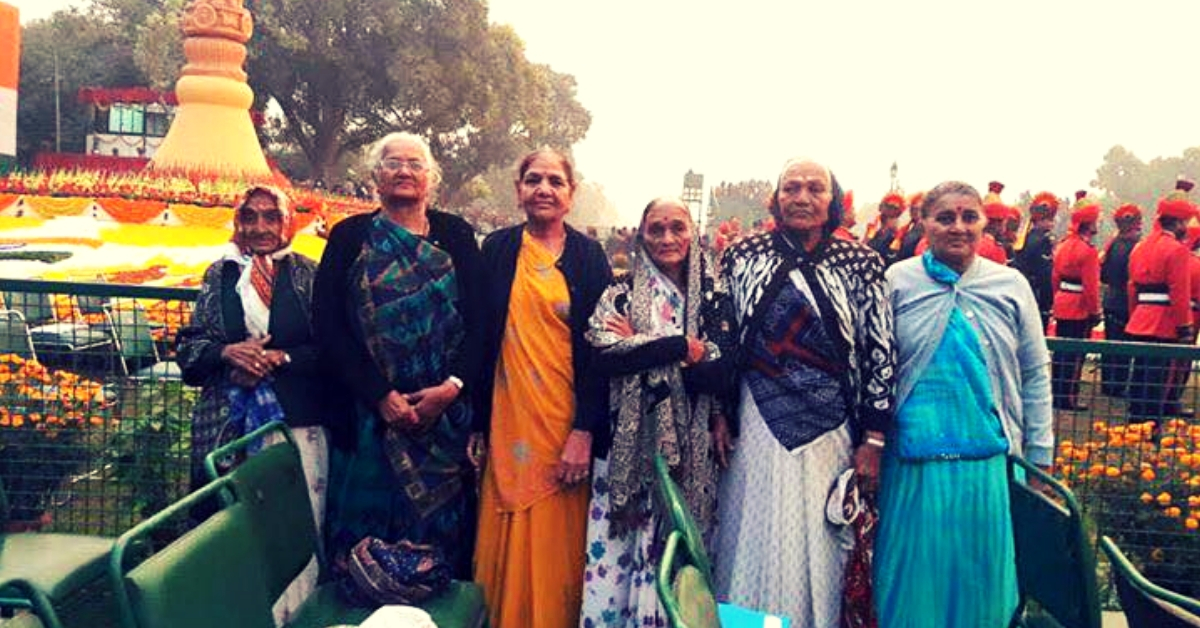In 1971, 300 Bhuj Women Risked Their Lives to Revive a Bombed Airstrip in 3 Days
Armed with nothing but a feeling of sheer patriotism, they took up the practically impossible task of repairing the airstrip.

On the night of December 8, during the 1971 Indo-Pak War, a squadron of Sabre jets dropped more than 14 Napalm bombs on the Indian Air Force airstrip in Bhuj. The impact rendered the airstrip useless and Indian combat aircraft could not take off.
The IAF entreated the Border Security Force (BSF) to restore the airstrip but time was ticking, and the labourers were few. It was at this time that 300 villagers—mostly women—from Madhapur in Bhuj, decided to step out of their homes. Armed with nothing but sheer patriotism, they took up the practically impossible task of repairing the airstrip.
And they did. Within 72 hours!

Speaking to the Ahmedabad Mirror, one of these brave women, Valbai Seghani said she felt no less than a soldier.
Seghani recalls how, on December 9, 1971, when they were alerted about the bombings, not once did the women think about their safety or their families before boarding the army vehicle, and travelling to the airstrip to repair it.
“We were 300 women who left our homes to help the Air Force, determined to ensure the pilots fly again from here. If we were to die, it would have been an honourable death,” she said.
The then District Collector encouraged the courageous 300 to join the noble cause. But when the village sarpanch, Jadhavjibhai Hirani, personally asked the women to help the forces, the women willingly signed up.
Another person instrumental in encouraging the women to come to the aid of the army was Squadron leader Vijay Karnik.
Karnik was in charge of the erstwhile Bhuj airport during the war. He, along with two senior officers, 50 IAF and 60 Defense Security Corps personnel ensured the airstrip was operational despite the damage the bomb blast had caused.
Speaking to the Asian Age, Squadron Leader Karnik recalls the incident saying, “We were fighting a war and if there had been any casualties of any of these women, it would have been a great loss to the war effort. But I took the decision and it worked out. I had briefed them where they could take shelter if attacked and they followed it bravely.”
You will soon see Bollywood actor Ajay Devgn essaying the life of the brave officer on celluloid in a project titled Bhuj: The Pride of India.
Restoring the bombed airstrip was an arduous task as the lives of these civilians were constantly at risk. They began their work under the guidance of the officers. A siren alerted them every time the IAF sensed any approaching Pakistani bombers.
“We would immediately run and hide in the bushes. We were asked to wear pale green saris to camouflage ourselves. A short siren was an indication that we could resume work. We toiled from dawn to dusk to make optimum use of the daylight,” Seghani narrates.
In an interview with The Times of India, Viru Lachhani, another brave heart who repaired the airstrip says, “We were instructed to cover the strip with cow dung to camouflage it from the enemy’s planes. While working, we had to scurry for shelter in bunkers at the sound of the siren. Taking shelter in bunkers during air strikes, we had to survive on sukhadi and chilli.”
On the first day they slept hungry as there was nothing to eat. On the second day though, thanks to the kindness of a local temple, fruits and sweets were offered to them. It helped them work through the third day.
On day four, at 4 pm, the combat aircraft took off from the airstrip. It was finally functional.
“It was a proud moment for us,” says Jadhavjibhai Hirani.
Valbai recalls that her son was merely 18 months old when left him under the guardianship of her neighbours to do her bit for the country. When the neighbours inquired as to who would take care of her son if something were to happen to her, she had no answer.
“I only knew this was the time my brothers needed me the most. I still remember how the pilots took care of us,” Valbai told Ahmedabad Mirror.
Also Read: How IAF’s ‘Superspy In The Sky’ Tracked Sensitive Info From Inside Pakistan
Hiruben Bhudia, who had accompanied Valbai resonates the same sentiments, “The airstrip needed to be reconstructed on a war footing. However, due to labour shortage, they counted on us. In 72 hours, we ensured the pilots were back to the skies. We still have the same energy, and if the armed forces need us, we will work for them again.”
When, three years after the war, the former Prime Minister Indira Gandhi offered gifts to these women, they humbly turned her down saying, “What we did was for our country.”
Valbai adds how a cash reward of Rs 50,000 was donated for a community hall at Madhapar at the time. The Central government dedicated a war memorial called Virangana Smarak at Madhapar village of Bhuj to these brave hearts last year.
(Edited by Saiqua Sultan)
Feature Image Credit: Ajay Devgn/Twitter
Like this story? Or have something to share?
Write to us: [email protected]
Connect with us on Facebook and Twitter.
This story made me
-
97
-
121
-
89
-
167
Tell Us More
If you found our story insightful, informative, or even just enjoyable, we invite you to consider making a voluntary payment to support the work we do at The Better India. Your contribution helps us continue producing quality content that educates, inspires, and drives positive change.
Choose one of the payment options below for your contribution-
By paying for the stories you value, you directly contribute to sustaining our efforts focused on making a difference in the world. Together, let's ensure that impactful stories continue to be told and shared, enriching lives and communities alike.
Thank you for your support. Here are some frequently asked questions you might find helpful to know why you are contributing?



















